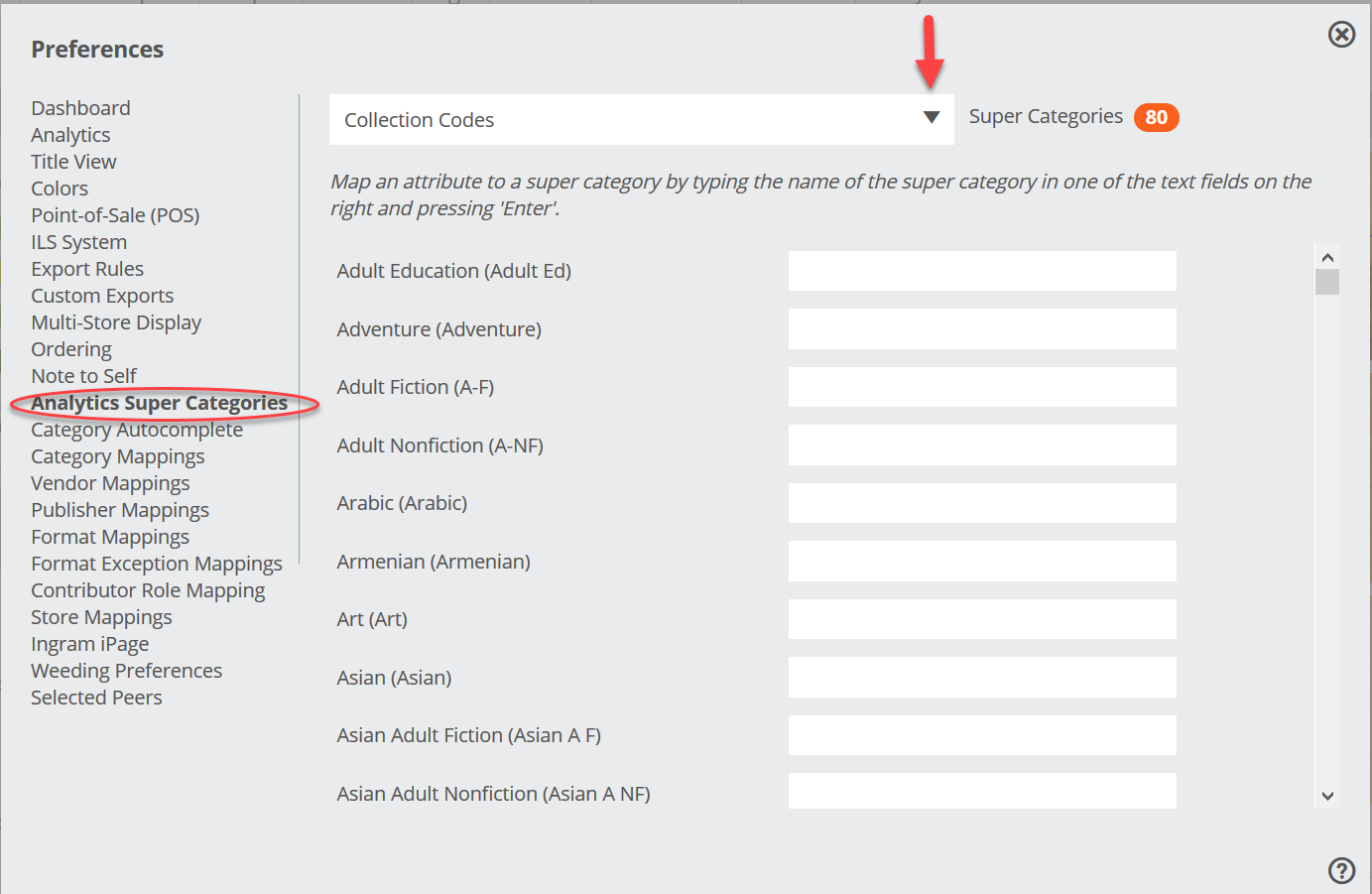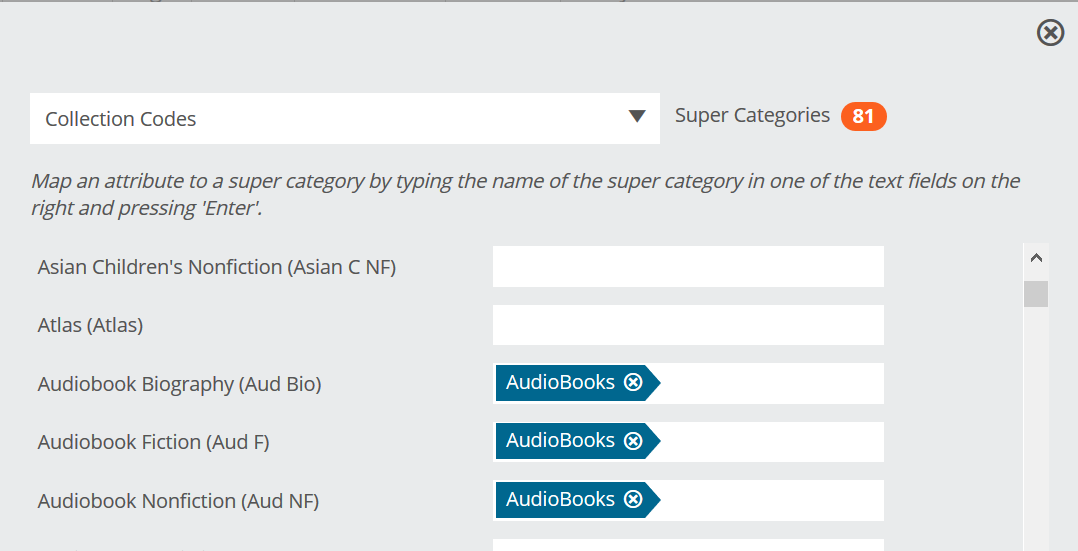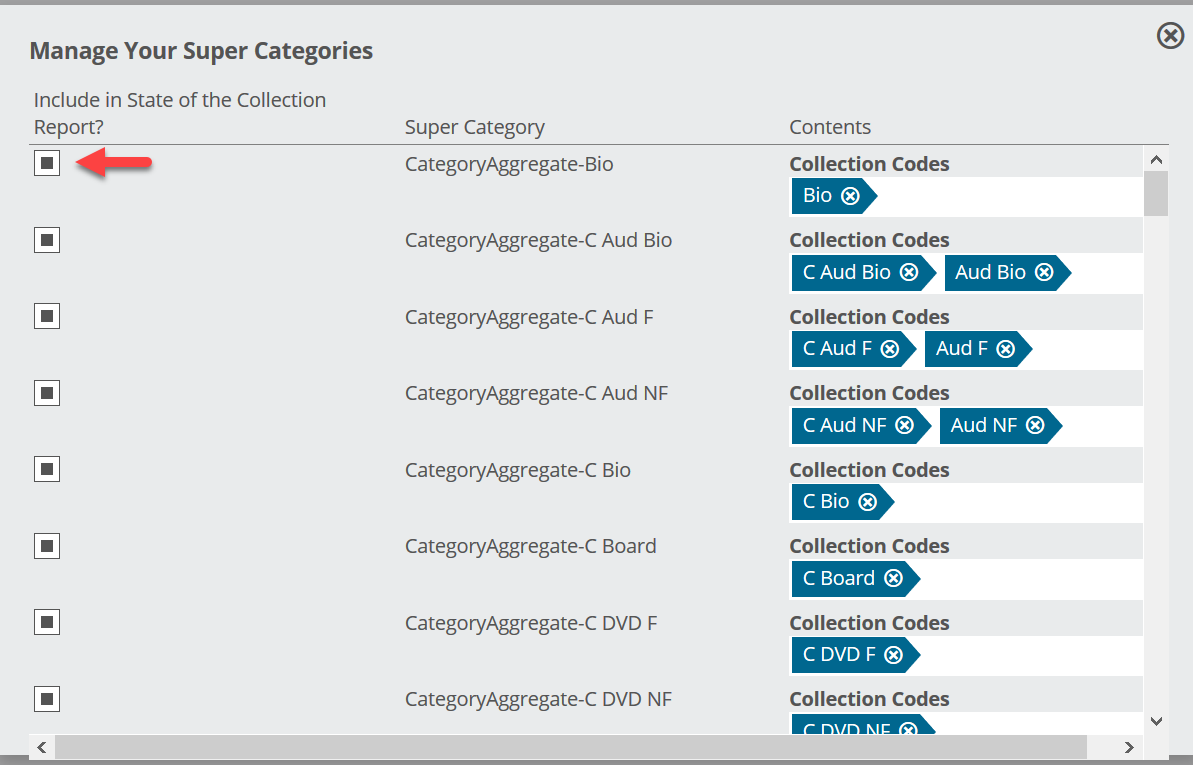Super Categories are a handy way to quickly create groups of your Shelf categories (what your library uses to shelve books like Dewey number or Teen Fiction) in order to make measuring those groups as easy as possible. Think of it as applying tags to collection codes instead of individual titles.
Generally speaking, the State of the Collection Report will provide you with an objective assessment of the strengths and weaknesses of your library’s collections, identify specific areas to focus on, and enable you to track improvement over time. When viewing Your Codes within the State of the Collection Report, comparison to other library systems is not possible, because those systems will classify their content their own way, using their own codes. You are still able to use that report to gauge the performance of your own collection codes.
Here’s how to set them up:
First, your account must have the Analytics Administrator privilege to create Super Categories. Click on your name at the top of any page to see your Privileges.
Click on the tools icon next to your name at the top of any Edelweiss page to see the Analytics Super Categories option on the left side of the dialog box. At the top, you can toggle between Collection Code (In this documentation, I am using the terms collection code to designate the shelf code used by a library. A Dewey number could be a considered a collection code. These are whatever custom ILS fields you sent us when we set you up on Analytics. This terminology may differ by library.):
or Material Type:
You can then group category codes into Super Categories by “tagging.” Just type in what you want and press <Enter>. You can add as many categories to a Super Category as you like. For example, if you have a number of titles that are AudioBooks and you have them further broken down by subject, you can create the Super Category just called AudioBooks as I have done here:
You can see how many Super Categories you’ve created at the top of the screen. Click in to that bubble to manage those Super Categories.
As you can see, you can select whether or not a Super Category is included in your State of the Collection Report with the checkboxes on the left. The “Contents” column will show you which of your categories are included in a Super Category. Click the X in the category name to remove that category from that specific Super Category.
In addition to using Super Categories in the State of the Collection Report, you can also use them as Saved Filters, which you can then use in your Analytics tools:
Your Super Categories will be available in your next Shelf Report. You can choose to view those Super Categories by clicking on “All Genres” at the top of any page of your Shelf Report:







